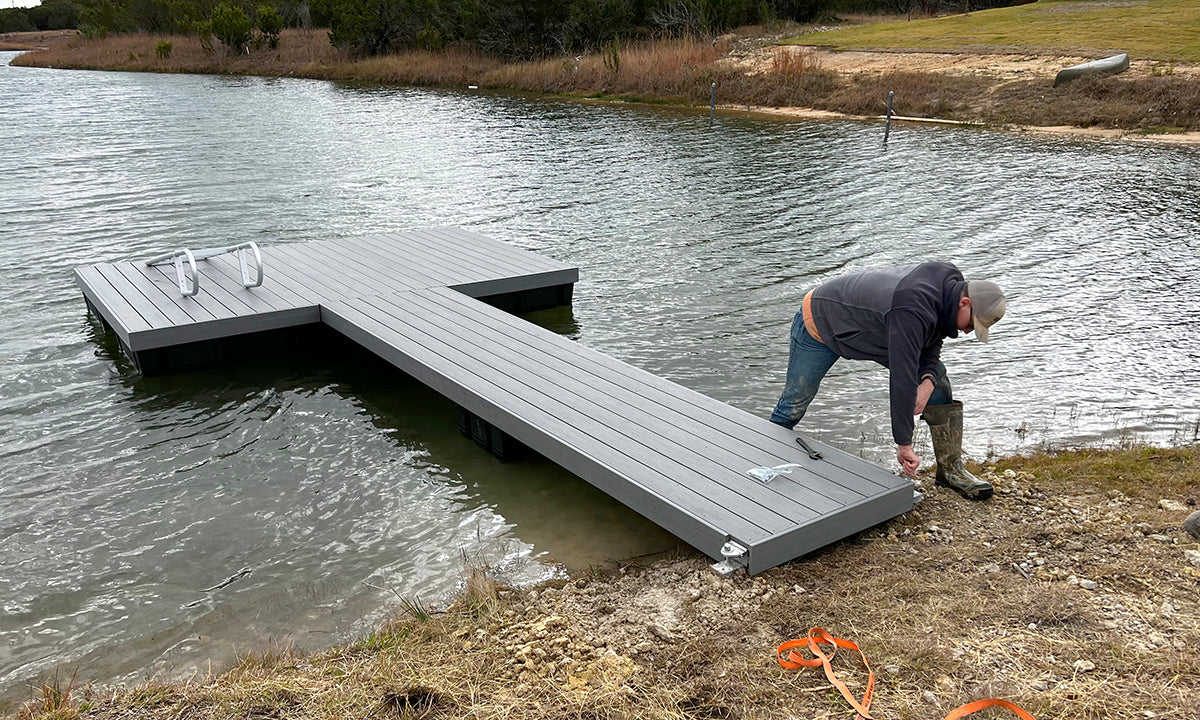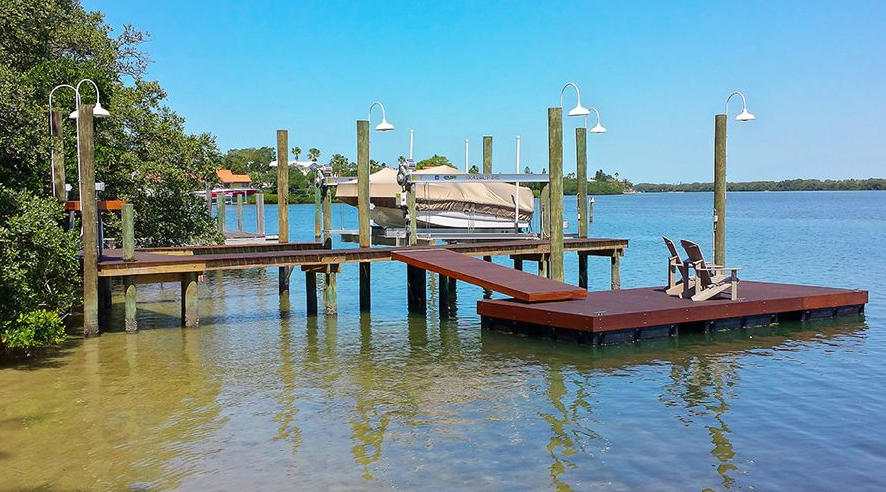Find the Perfect Floating Dock Builder to Bring Your Waterside Vision to Life
Find the Perfect Floating Dock Builder to Bring Your Waterside Vision to Life
Blog Article
Produce the Perfect Docking Service With Floating Docks
Floating docks existing a flexible option for a variety of maritime requirements, adapting perfectly to varying water levels and diverse vessel kinds. As we check out the crucial elements that add to the effectiveness of floating docks, a number of key aspects concerning security and maintenance will emerge, elevating inquiries regarding exactly how to optimize your docking experience.

Advantages of Floating Docks
Floating docks offer numerous advantages that make them an excellent choice for numerous maritime applications. Unlike taken care of docks, floating docks rise and autumn with the tide, making sure regular access for vessels.
In addition, floating docks are typically less complicated and quicker to install compared to typical set structures. Their modular layout permits for uncomplicated setting up and disassembly, helping with maintenance and moving when needed. This versatility is specifically beneficial for temporary applications or in environments where conditions might change.
Floating docks also have a tendency to be much more eco-friendly, as they lessen interruption to the seabed and bordering marine ecosystems. Their buoyant nature minimizes the risk of damages to aquatic life, advertising a much healthier setting. Furthermore, these docks can be customized to suit various vessel sizes, guaranteeing that they fulfill certain functional demands - floating docks.
Ultimately, the mix of versatility, ease of setup, and environmental considerations makes floating docks an extremely effective remedy for a wide variety of maritime demands.
Choosing the Right Products
Choosing the ideal materials for floating docks is vital to ensure longevity, longevity, and stability. The option of products directly influences the dock's efficiency in numerous ecological conditions, consisting of exposure to water, sunlight, and potential wear from marine website traffic.
Typical products used for floating docks consist of light weight aluminum, timber, and high-density polyethylene (HDPE) Aluminum is light-weight, corrosion-resistant, and needs minimal maintenance, making it an exceptional option for longevity. Its first cost can be higher compared to various other products.
Wood, while visually enticing and giving a traditional appearance, can be prone to rot and insect damage otherwise effectively dealt with. Utilizing pressure-treated wood or naturally resilient types like cedar or redwood can minimize these concerns.
HDPE is a prominent selection because of its resistance to UV rays and chemicals, in addition to being eco pleasant. floating dock builder. It is lightweight and available in various shades, allowing for personalization
Inevitably, the appropriate product option will depend on specific requirements, including budget plan, wanted appearances, and environmental considerations. Mindful analysis of these elements will bring about a resistant and successful floating dock service.
Design Considerations for Security
When making floating docks, ensuring stability is an essential facet that can dramatically influence their capability and safety. Security in floating dock layout is affected by various factors, consisting of buoyancy, weight circulation, and the arrangement of components. An optimal buoyancy system should utilize materials that supply sufficient lift while decreasing weight. This balance makes certain that the dock remains above water, also under differing lots.
Weight distribution is vital; equally dispersing loads across the dock stops tilting and boosts security. This can be attained with critical positioning of docking devices, such as fenders and cleats, as well as check that correct spacing of drifts. Additionally, the measurements of the dock should be thoughtfully planned. Broader styles can supply boosted security, particularly in rough water problems, while longer docks might need added supports to stop drooping.
An additional crucial factor to consider is the ecological impact, including wave action and wind. Incorporating attributes such as sidewalls or skirting can help reduce the impacts of environmental pressures, preserving security in negative problems. Inevitably, a combination of thoughtful layout, material selection, and understanding of ecological variables will generate a drifting dock that fulfills both security and safety requirements.
Installation Tips and Techniques

Following, secure the essential authorizations and adhere to regional laws, which might determine installation techniques and environmental considerations. If needed, involve a qualified specialist experienced in floating dock installments. Use top quality materials made for marine environments to enhance toughness and long life.
When placing the dock, align it parallel to the coastline to promote very easy accessibility. Make sure that the anchoring system is durable, utilizing cinder block or helical supports to support the dock against wind and wave activity. It's vital to represent seasonal water level changes, including possible ice motion in colder climates.
During the installment, confirm the dock's floatation and stability before wrapping up the anchoring. Consistently evaluate the installation for any type of signs of wear or damage. By adhering to these tips and techniques, you can achieve a safe and secure, useful, and visually pleasing floating dock installation that fulfills your needs.
Upkeep and Care Standards
Maintaining and caring for floating docks is crucial to lengthening their life-span and making sure risk-free usage. Routine inspections must be conducted to recognize any type of indications of wear, damage, or aquatic development. Search for cracks, loosened installations, or tarnished locations on the dock's surface area, as these concerns can endanger structural stability.
Cleansing is necessary. Utilize a pressure washing machine to eliminate algae, barnacles, and debris, which can build up with time. For stubborn development, consider eco friendly cleaning representatives that won't damage water life.
In addition, inspect the mooring lines and anchors regularly to guarantee they are free and secure from rust. Change any torn or damaged lines quickly to preserve security.
During severe climate, such as tornados or freezing problems, take precautionary measures. Safeguard the dock with extra mooring lines and, if feasible, remove any removable components to stop damage.
Verdict
In final thought, the application of floating docks provides a versatile and efficient docking option appropriate for different maritime applications. With appropriate installation and great post to read normal maintenance, floating docks can offer dependable and effective docking experiences for a wide variety of vessels.
As we check out the essential aspects that add to the effectiveness of floating docks, a number of key variables pertaining to stability and maintenance will arise, increasing concerns regarding just how to optimize your docking experience. Unlike repaired docks, floating docks surge and loss with the trend, ensuring consistent availability for vessels.When making floating docks, making certain stability is a basic aspect that can substantially influence their capability and safety. Security in floating dock style is affected by different variables, consisting of buoyancy, weight circulation, and the plan of components. Inevitably, a mix of thoughtful design, product choice, and understanding of environmental factors will produce a drifting dock that satisfies both stability and security needs.
Report this page